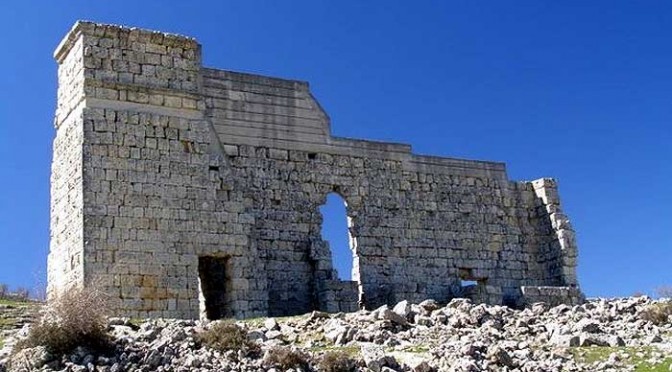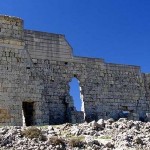It is hard to believe that Ronda was once a major centre in the Iberian provinces of the Roman Empire, however a quick look at the history books will find references to Acinipo and the terrible battles that occurred at Monda during a civil war between Julius Caesar and the sons of Pompey.
Acinipo the city was most likely founded by native Iberians several thousand years ago, and archeological evidence at the site shows a bronze age settlement existed here between 1100BC and 750BC, and a Carthiginian town may well have been established after this period, before the fall of Carthage in the Punic wars.
Want to read learn some language? Read this articles Spanish translation here….
Lesen sie mehr über Acinipo
Some history of the Acinipo Ruined Roman City
However the most obvious history of Acinipo relates to the Roman era, starting from 202BC until the fall of the city nearly 700 years later. At its height, Acinipo was home to 5,000 Romans, with many more believed to inhabit the countryside and the castle of Arunda (modern day Ronda).
The district at one point in the first century AD was so important that Acinipo minted its own coins for a brief few years (56-53BC), and led to the construction of the ampitheatre capable of seating 2,000 people. In fact, after Caesar’s civil war many parcels of land were given to veterans in his legions who settled with their wives and children, became tradespeople, or grew grapes for making into wine. The name Acinipo means “amongst the vineyards”.
E-Bike – Acinipo and Setenil Circular Guided Cycling
Fancy visiting Acinipo by bike? A cycling journey through history. An undulating mountain loop from Ronda up into the hills and the Roman remains of Acinipo. Continue riding down to the ancient riverside “cavehouses” of Setenil de las Bodegas and then back up to Ronda. Quiet roads with long ascents and descents.
Situated at 999 metres above sea level with commanding views over the area, Acinipo was never threatened by barbarians, in fact the Iberian population of the time was completely Roman in almost every way, and life was more or less safe and prosperous. Acinipo was a complete city, with public buildings, the ampitheatre, Roman baths, temples; everything a Roman citizen could need.
During the time of Acinipo’s dominance over the area we know that Roman settlements also existed at Grazalema, Setenil de las Bodegas, Olvera, Antequera, Juzcar, and of course Arunda, where a castle and military fortress was built to keep the army out of the major civilian towns.
Sadly the fortunes of Acinipo were strongly tied to the fate of the Roman Empire, and as barbarians threatened Rome from the north many of her citizens moved to military settlements for protection. As a consequence Arunda slowly became the bigger town, and Acinipo declined. By the time Rome fell in 495AD, Acinipo was all but abandoned, and soon fell into disrepair.
Acinipo offers a fascinating look into how Roman towns were planned out on the frontiers of the Empire around the time of the Punic wars, and is worth a visit along with Setenil de las Bodegas, the village built into the caves.
Directions: Take the road to Sevilla (A-376), and after 7km turn right into MA-7402 Acinipo and Ronda la Vieja.
Opening times
Monday : Closed
Tuesday to Saturday – 10:00 to 16:00 (The last entry is 17:00)
Sunday : 09:00 to 13:00 (The last entry is 14:00)
(The hours were current at publishing time but may alter at any time…. Check the opening times by visiting the tourist office in Ronda.)
Ronda Today
Everything you need to know before you visit Ronda “The city of dreams” in Andalucia. https://www.rondatoday.com/
Wildside Holidays – Spain
Take a trip on the Wildside! Discover the wildlife and nature of Spain, its Natural and National Parks and find the top wildlife, activity and walking holiday companies.







